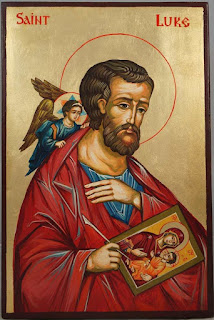Friday of Easter Week: Two responses to the resurrection
When it was evening on that day, the
first day of the week, and the doors of the house where the disciples had met
were locked for fear of the Jews, Jesus came and stood among them and said,
‘Peace be with you.’ After he said this, he showed them his hands and his side.
Then the disciples rejoiced when they saw the Lord. Jesus said to them again,
‘Peace be with you. As the Father has sent me, so I send you.’ When he had said
this, he breathed on them and said to them, ‘Receive the Holy Spirit. If you
forgive the sins of any, they are forgiven them; if you retain the sins of any,
they are retained.’
But Thomas (who was called the Twin),
one of the twelve, was not with them when Jesus came. So the other disciples
told him, ‘We have seen the Lord.’ But he said to them, ‘Unless I see the mark
of the nails in his hands, and put my finger in the mark of the nails and my
hand in his side, I will not believe.’
A week later his disciples were again
in the house, and Thomas was with them. Although the doors were shut, Jesus
came and stood among them and said, ‘Peace be with you.’ Then he said to
Thomas, ‘Put your finger here and see my hands. Reach out your hand and put it
in my side. Do not doubt but believe.’ Thomas answered him, ‘My Lord and my
God!’ Jesus said to him, ‘Have you believed because you have seen me? Blessed
are those who have not seen and yet have come to believe.’
Now Jesus did many other signs in the
presence of his disciples, which are not written in this book. But these are
written so that you may come to believe that Jesus is the Messiah, the Son of
God, and that through believing you may have life in his name.
[John 20.19-32]
- These two paintings, both by Carravaggio, show us
depictions first of the story of St Thomas, and then of the Conversion of St
Paul.
We
don’t usually talk of Ss Thomas and Paul in the same breath, and in one sense
we have no need to, whilst they are part of the same story, their narrative
arcs follow different trajectories. To put it simply their stories follow
different paths. And yet their responses to the resurrection almost parallel
each other. There is disbelief, followed by a moment of revelation followed by
shock, finally there is belief. Both set out demonstrating incredulous
disbelief, both end up believing following a personal encounter with the risen
Christ. In their responses to the resurrection both call Jesus ‘Lord’.
Similarly,
both of these saints mirror belief in our own age, which responds to the
call to faith either incredulity or outright hostility. St Thomas asks the
right questions, and is blessed for it. St Paul literally has his socks blown
off when the one to whom he has been hostile pays him a personal visit, and
encourages him to change his mind. Both start out disbelieving, both in a moment of crisis find faith and believe.
- St
Thomas and St Paul, patron saints of our own age, pray for us.




Comments
Post a Comment